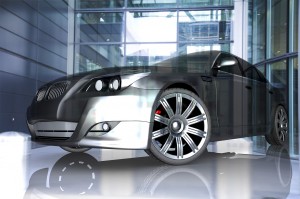Volvo, which has been leading car industry when it comes to safety features, has recently developed an accident avoidance technology that uses radar to detect an oncoming vehicle and automatically steer its driver out of trouble. But like any other state-of-the-art safety devices, Volvo’s innovations will have to prove itself before meriting auto insurance discounts.
 Industry specialists say time is the ultimate measure for insurers and giving huge discounts to newly introduced safety devices is not their practice. Without hard data, advanced car safety features will not merit any cut on premium rates.
Industry specialists say time is the ultimate measure for insurers and giving huge discounts to newly introduced safety devices is not their practice. Without hard data, advanced car safety features will not merit any cut on premium rates.
Experts explained that safer cars lead to safer streets and, consequently, fewer auto insurance claims. This is when vehicle insurers reduce the premium costs of certain vehicles.
The airbag, which was a one-time seemingly space age device, did not immediately merit discounts. Now that it is as common as power locks, any underwriter who looks inside a car equipped with airbags knows that its owner deserves some discounts on premium rates.
A recently published study about auto insurance claims in the United States reveals that policyholders whose vehicles equipped with airbags received lesser injuries during accidents and filed lower claim costs. The study also revealed that there is a noticeable impact on the seriousness of injury between drivers who drove with safety devices and those who did not. Additionally, drivers with safer vehicles were given lower premium rates when they renewed their policies.
As noted by experts, risk level is the primary determinant of auto insurance costs. Risk can be determined through several underwriting factors such as age, marital status, residence, driving records, and many others.
Before safety devices were introduced, drivers who completed advanced driving programs already received lower rates since they are more unlikely to file claims. Same is true for modern day motorists. That is why experts encourage drivers, especially teens, to participate in defensive driving courses.
Insurers also designate crash rating to vehicles to determine how well each car model could protect its driver and passengers from sustaining injuries. Such rating is determined during a vehicle’s crash test, when manufacturers perform destructive testing to ensure that a newly-developed vehicle can protect its occupants during an impact.
While insurers are still determining how much credit they would give to new cars which claim to be very safe, other newly introduced safety features such as auto-steering, auto-braking and lane departure avoidance already showed promising results to motorists.
Specialists expressed high hopes on lane departure warning systems since lane departures account for 44 percent of fatal car crashes in the United States.


